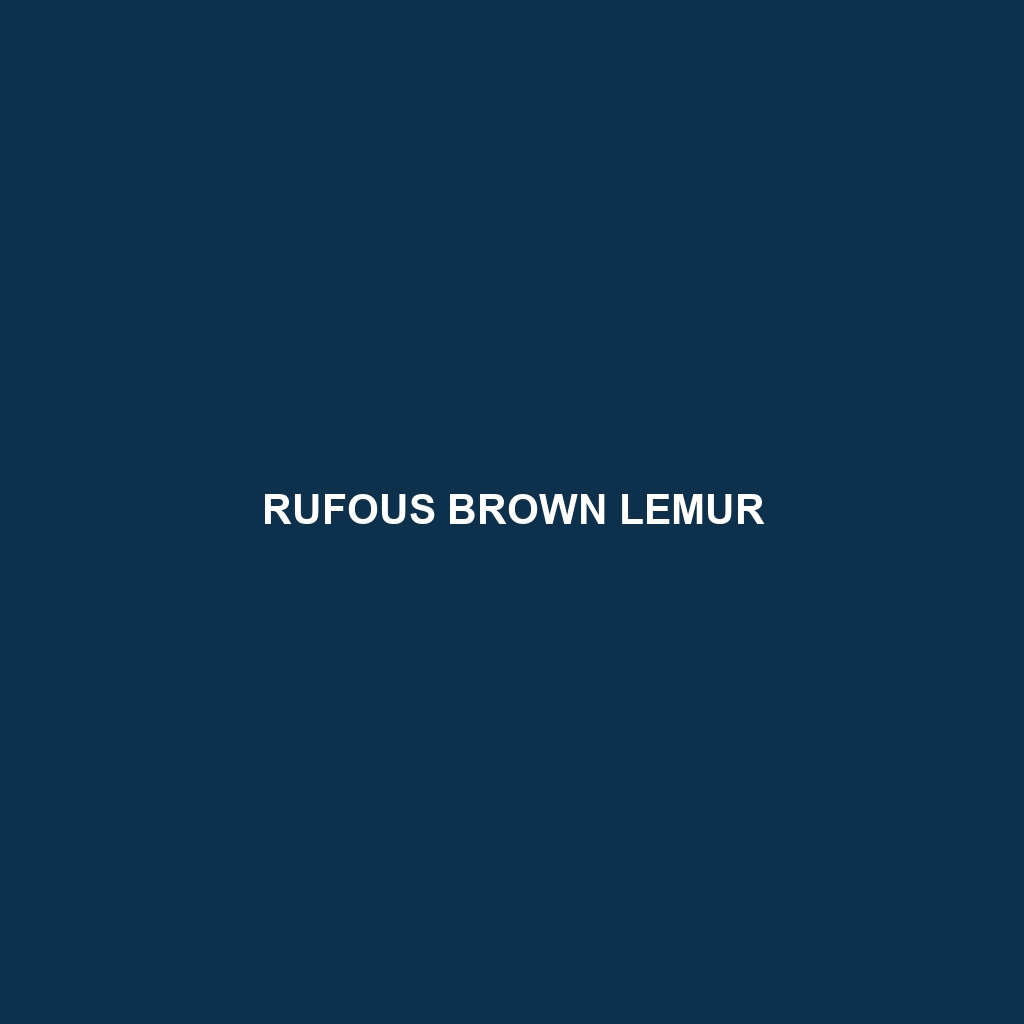Rufous Brown Lemur
Common Name: Rufous Brown Lemur
Scientific Name: Prolemur simus
Habitat
The Rufous Brown Lemur is primarily found in the southern and eastern rainforests of Madagascar. These lemurs thrive in humid forests, often residing in dense canopies and along the edges of the forest, which provides ample food sources and protection from predators. Their habitat is typically characterized by a rich biodiversity, with a variety of trees and undergrowth that supports their lifestyle.
Physical Characteristics
Rufous Brown Lemurs are medium-sized primates, measuring about 40 to 48 centimeters in length, not including their bushy tails, which can be as long as their body. Their fur is primarily reddish-brown with a lighter underside. Notable features include large, expressive eyes which are often a striking orange-red, providing excellent night vision. They possess a distinctive face with a rounded snout and long limbs that aid in their arboreal lifestyle, making them agile climbers.
Behavior
Rufous Brown Lemurs are known for their social nature, typically living in small groups led by a dominant female. They are diurnal, active during the day, and display a variety of vocalizations to communicate with their group members. Their playful behavior often includes jumping and swinging between branches, which is not only crucial for foraging but also serves as social bonding among group members. These lemurs are also adept at scent-marking to establish territory.
Diet
The Rufous Brown Lemur primarily feeds on fruits, leaves, and flowers, with a particular preference for ripe fruits and soft leaves. Their diet is diverse and changes seasonally, emphasizing their role as important seed dispersers in their ecosystem. This feeding behavior helps maintain the health of their forest habitat. During lean seasons, they may also consume bark and insects, showcasing their adaptability to dietary changes based on seasonal availability.
Reproduction
Rufous Brown Lemurs typically breed during the rainy season, which occurs from November to January. The gestation period lasts about 125 days, after which females usually give birth to a single offspring. Mothers are highly protective and nurturing, carrying their young on their bellies until they are old enough to explore independently. Social groups often assist in caring for infants, highlighting their communal nature.
Conservation Status
The Rufous Brown Lemur is currently classified as “Endangered” on the IUCN Red List, primarily due to habitat loss from deforestation, encroachment, and illegal hunting. Conservation efforts are underway to protect their remaining forest habitats and promote awareness about their plight, emphasizing the importance of preserving this unique species.
Interesting Facts
– Rufous Brown Lemurs are known for their remarkable agility as they navigate the treetops of their forest habitat.
– They are one of the few lemur species exhibiting matriarchal social structures, with females taking the lead in group dynamics.
– Their unique vocalizations can vary widely, with calls that resonate over long distances, helping them to maintain group cohesion.
Role in Ecosystem
As significant seed dispersers, Rufous Brown Lemurs play a crucial role in maintaining the health and biodiversity of their rainforest ecosystem. By consuming a variety of fruits and subsequently excreting the seeds, they facilitate plant reproduction and forest regeneration. Their presence helps sustain the delicate ecological balance, influencing both plant diversity and the populations of other forest species.
